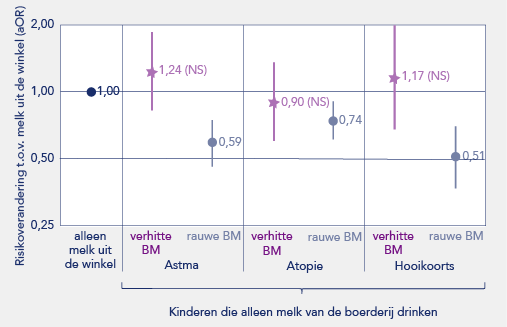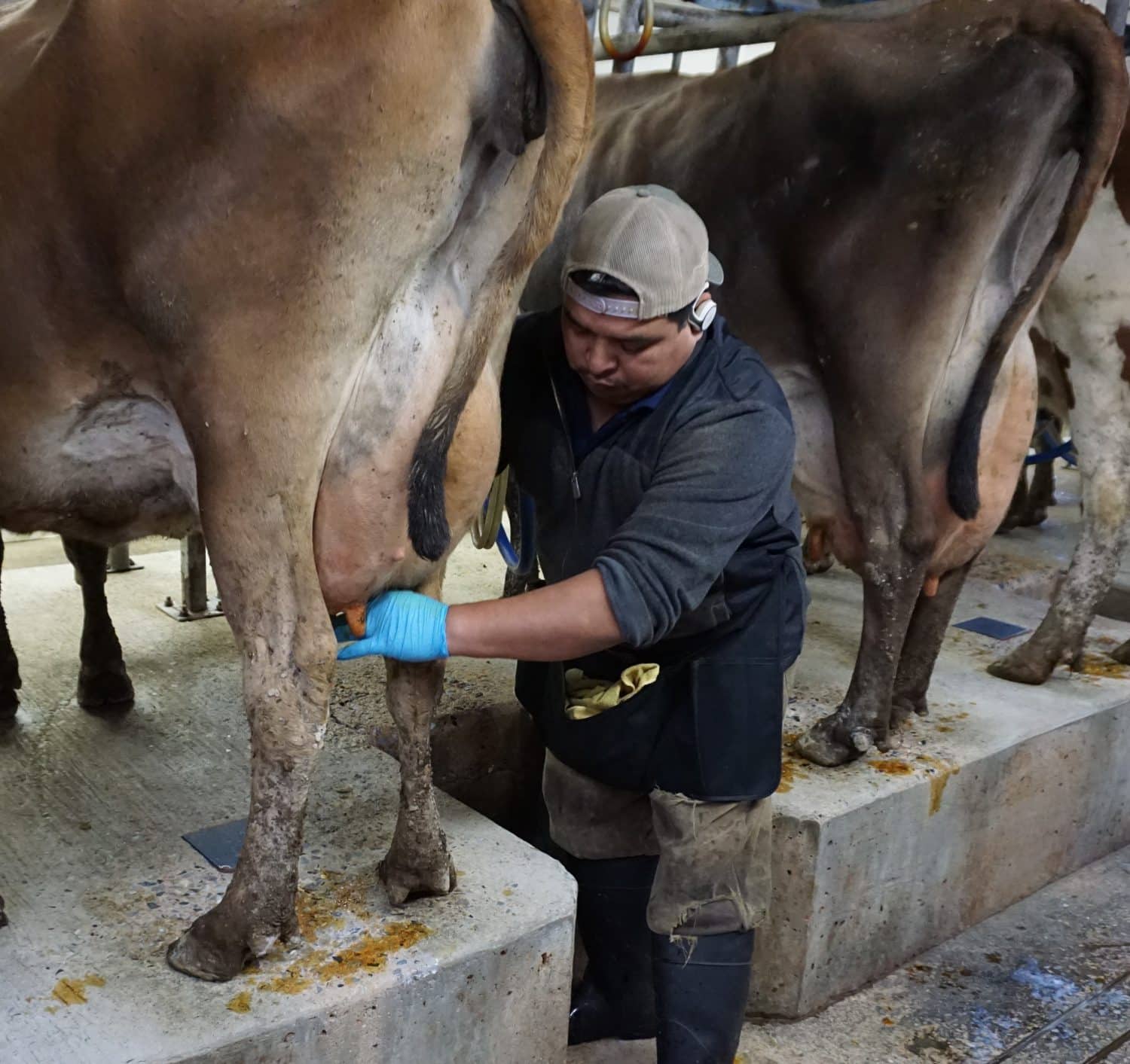Take home message:
• If raw farm milk is boiled at a temperature of around 80oC, the protection against asthma and allergies is gone.
• No differences were found between heated farm milk and heated shop milk (mostly homogenized UHT milk), which indicates that the heating is already decisive.
Farm milk?
At start of the research among farm children, the publications mentioned only the consumption of “farm milk”. It did not mention the word “raw farm milk” or “raw milk”. The main reason was that researchers doubt everything and want to check and double check. Did the farm woman tell the truth, when she said that her child is getting raw milk? The simple check is to take a milk sample offered to the children and control it for the alkaline phosphatase enzyme. If heated above pasteurization temperature, this enzyme is no longer active, after the milk was heated. The first result in this study was, that over 85% of the mothers were telling the truth.
In the research group of Prof.Dr. Braun-Fahrländer, PhD student Georg Loss (Loss et al., 2011) compared the outcomes in asthma, atopy and hay fever incidence within the group of farm children (figure 1). Although farm children are generally quit well protected for immune related diseases, still differences were found among the children. A group of 800 children had grown up exclusively on the cow’s milk of their own farm (FM), however some on raw, others on boiled farm milk. A third group of children acted as a control group. These were the farm children, who did never drink their own farm milk, but only milk from the store, mainly UHT milk. Loss tried to correlate the milk consumption pattern from age 1 onwards with the immune related diseases several years later.
After statistical calculations it became clear, that farm children who drank raw milk had a significantly lower challenge to get asthma, atopic diseases or hay fever compared to the other two groups (Figure 1). The disease incidence in the children receiving shop was set at 1 (=100%) and the two other groups were compared with them. The red numbers indicate that there are no significant reduction in incidence (NS), if children drank heated farm milk. The blue figures indicate a significant reduction of 41%, 26% and 49% for asthma, atopy and hay fever, respectively, compared to the control group. Loss showed in another way, that there is an independent reduction of disease incidence, but only if children consumed raw farm milk.

His research makes it clear that there is a decrease in health within the well protected farm children, if farm milk was heated in any way (milk from the store or heated farm milk). Although some people blamed the homogenization of milk as an important factor for the raise in asthma and allergies, Loss showed that the common impact of the two milk types was the heating. In later experimental studies in mice (Abbring et al., 2017; 2019), these results could be repeated in controlled experiments rather than in an epidemiological studies calculating correlations.




